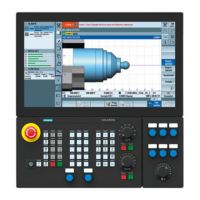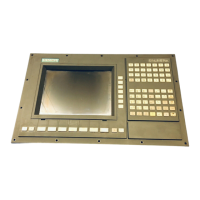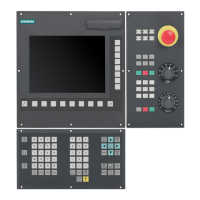Fundamental Principles of NC Programming
2.2 Language elements of the programming language
Fundamentals
Programming Manual, 11/2006, 6FC5398-1BP10-2BA0
49
2.2 Language elements of the programming language
Overview
The language elements of the programming language are determined by
• Character set with uppercase and lowercase letters and digits
• Words with addresses and sequence of digits
• Blocks and block format
• Block length with maximum possible number of characters
• Order of the words in a block with table of the addresses and their meaning
• Main blocks and subblocks
• Block number
• Addresses with table for important addresses and explanations
• Addresses effective modally or non-modally
• Addresses with axial extension with table of extended address notations
• Fixed addresses with table and statement of the meaning for default setting
• Fixed addresses with axis expansion with table and statement of the meaning for default
setting
• Adjustable addresses with statement of the adjustable address letters
• Predefined computing functions as well as arithmetic, comparative and logical operators
with corresponding value assignments.
• Identifiers such as variables, subroutines, keywords, DIN addresses and jump markers
Character set
The following characters are available for writing NC programs:
Uppercase characters
A, B, C, D, E, F, G, H, I, J, K, L, M, N,(O),P, Q, R, S, T, U, V, W, X, Y, Z
Please note:
Take care to differentiate between the letter "O" and the digit "0".
Lowercase letters
a, b, c, d, e, f, g, h, i, j, k, l, m, n, o, p, q, r, s, t, u, v, w, x, y, z
Note
No distinction is made between upper and lower case letters.

